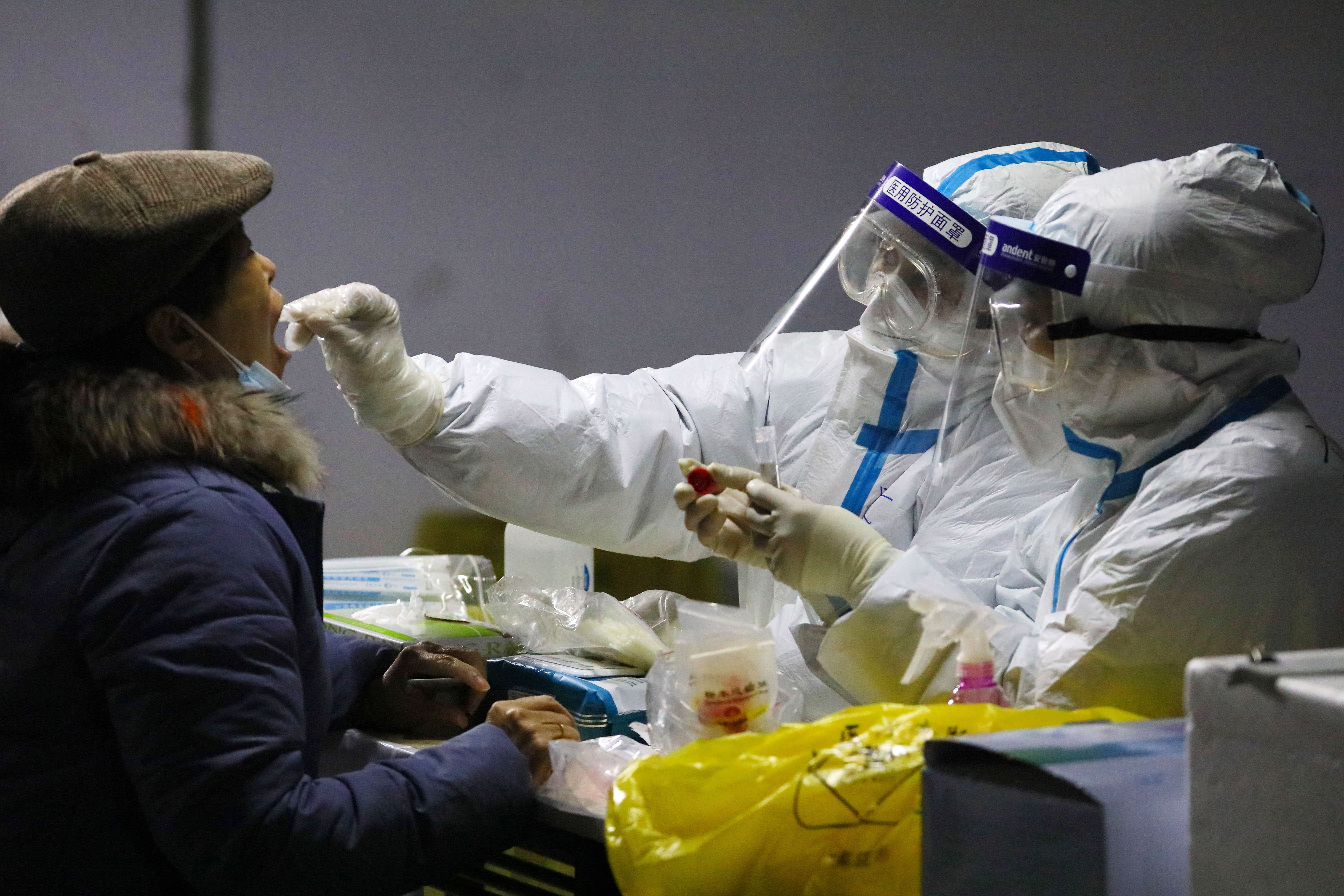A resident undergoes a Covid-19 coronavirus test in the basement of a residential complex as part of a mass testing program after new cases of the virus emerged in Shijiazhuang, in central China’s Hebei province, on January 12, 2021 .
STR | AFP | Getty Images
BEIJING – Local authorities in regions close to Beijing are tightening restrictions on social activity as new cases of coronavirus increase.
The city of Langfang, located about 1.5 hours south of central Beijing, told its nearly 5 million residents on Tuesday to stay home for the next seven days. The city is in Hebei, the same province as Shijiazhuang, a city of 11 million that was closed at the end of last week after an increase in coronavirus cases.
Shijiazhuang reported 39 new confirmed cases for Monday, while Langfang revealed one. This brought the total number of current confirmed and asymptomatic cases in Hebei province to over 500 people.
Separately, two regions in Heilongjiang province, in the far north of China, announced blockades on Tuesday. The province reported a new confirmed case and 36 asymptomatic patients on Monday.
Beijing reported a confirmed case on Monday. Since mid-December, the city has reported a handful of cases in succession, leading to stricter restrictions on some apartment complexes and mass testing on the outskirts of the country’s capital.
It was not immediately clear how much the local economy would be affected, as there was no official order to stop work. Heilongjiang accounted for just over 1% of China’s GDP in 2019 and Hebei for around 3.6%. None of the provinces is so economically important compared to the southeastern, coastal parts of China.
Representatives of European and American business associations in China said members were not significantly affected by the latest increase in virus cases. Economic activity generally slows down from late January to February, as hundreds of millions of workers return to their hometowns for the Lunar New Year.
However, some provinces have begun to announce bans on large-scale meetings and events. The central government is encouraging people to stay put during the Lunar New Year holiday, which officially falls in mid-February this year.
“The worsening of the coronavirus situation will affect economic activity and markets may need to moderate their expectations of strong pent-up consumer demand over the next LNY holidays in mid-February,” said Ting Lu, Nomura’s chief economist for China, in note on Monday. .
“With the worsening virus situation and the coldest winter in decades, the recovery in growth has lost some momentum in recent weeks,” he said. “A full recovery in the service sector may be delayed, as suggested by the weaker service PMI indices in December.”
Official and private surveys from last month showed that the services PMI, or Purchasing Managers Index, remained in expanding territory, but fell from November.
China’s economy shrank 6.8% in the first quarter of last year, when officials closed more than half of the country in an attempt to control the outbreak.
WHO team to start the investigation
Covid-19 first appeared in late 2019 in the Chinese city of Wuhan. Authorities closed the city in late January 2020, but the disease soon spread to the rest of the world in a global pandemic. Since then, the coronavirus has infected more than 90 million worldwide and killed more than 1.9 million people.
On Thursday, a team from the World Health Organization is due to arrive in China to research the origins of the virus with local scientists. WHO said the study will begin in Wuhan.
A separate WHO team is working with Covid-19 vaccine producers from Chinese pharmaceutical companies Sinovac and Sinopharm “to assess compliance with international quality manufacturing practices ahead of WHO’s list of potential emergency use,” said the WHO director-general. WHO General, Tedros Adhanom Ghebreyesus.
Beijing rejected the idea that Covid-19 came from China. After the spread of the virus stagnated internally last March, officials attributed the subsequent spikes in cases to foreign sources.
For the latest outbreak, Hebei province started reporting cases about 10 days ago. On Sunday, an epidemiologist at the province’s disease control center told reporters that the cases probably originated from foreign sources who had been in contact with the province before December 15.
